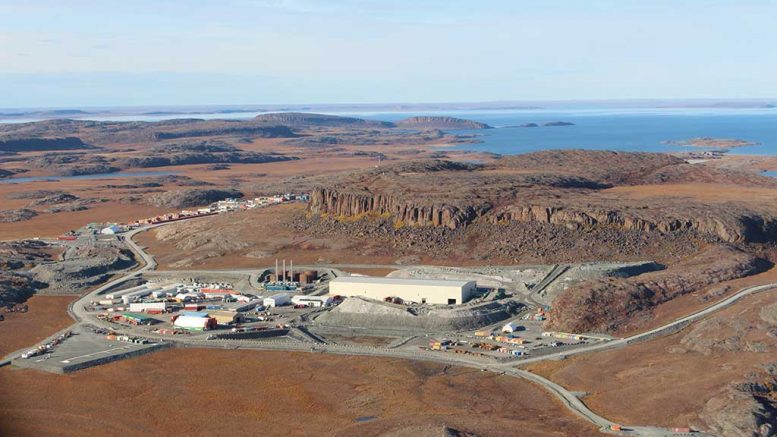TMAC Resources (TSX: TMR) posted a net loss of $10.3 million (11¢ per share) in the second quarter and warned there might be a risk of breaching certain debt covenants within the next year, due to the slow release of restricted cash, unscheduled downtime in July — associated with integrating the second concentrator line at its Doris mine in Nunavut — and a decline in the gold price.
Nevertheless, the company has made progress at the mine under the company’s new president and CEO, Jason Neal. The former investment banker joined TMAC in mid-February and can point to some early successes — including better recoveries in the plant and approval from the Nunavut Impact Review Board and the Nunavut Water Board to recover 16,000 tonnes of 17.2 grams gold per tonne from the crown pillar, which should start in the fourth quarter.
The NIRB has also recommended to Crown-Indigenous Relations and Northern Affairs Canada that TMAC’s proposed Madrid-Boston project should be permitted to proceed, which Neal says “is a key to medium-term value generation at TMAC that comes with development of the second, third and fourth mines at Hope Bay.” (The Madrid and Boston properties are expected to start producing in 2020 and 2022.)
The Doris mine achieved commercial production in the second quarter of 2017, but plant recoveries in the first quarter of 2018 averaged only 71%.
In the second quarter, recoveries rose to 76% in April, 83% in May and 85% in June, for an 82% average.
“The mid-80s is not our target, and the long-awaited installation of six new gravity concentrators is underway and is expected to be completed by the time we have our third-quarter conference call,” Neal said during an Aug. 13 conference call with analysts and investors. “The target recovery with these plant upgrades is 90%.”
During the three months ended June 30, the company also started putting material tonnage through the second concentrator line to ramp up to 2,000 tonnes per day of throughput.
Cash costs in the second quarter came in at US$928 per oz. and all-in sustaining costs were US$1,642 per ounce.
Neal noted the company “has had some challenges in the ramp-up, with greater-than-expected downtime and instability with the corresponding impact on recoveries,” but that the company’s progress “has been much quicker and our challenges far less severe than the initial ramp-up of the first concentrator line.”
All the improvements contributed to a record gold pour in the second quarter of 25,970 oz. gold, up 38% from the first quarter.
At the same time, underground mine development is progressing in the Doris Connector and Doris BTD zones, which is needed to support the planned ramp-up of plant throughput to its design capacity of 2,000 tonnes per day, Neal said.
Looking ahead, he said the most significant step forward will be the installation of six gravity concentrators in August, September and October that are designed to improve recoveries to 90% in the fourth quarter.
For the full year, TMAC expects to mine 420,000 to 470,000 tonnes, but has lowered the targeted grade from 11–14 grams gold per tonne (estimated in January) to 10–11 grams gold per tonne, based on adjustments to mine sequencing, including the deferral of some mining of the Hinge zone at Doris to 2019, as well as more conservative dilution assumptions.
Neal concluded the call with talk of Hope Bay’s exploration upside.
“We have almost inexhaustible exploration potential, including expanding existing deposits, near-mine targets and the regional potential for an 80- by 20-kilometre belt,” he said. “Doris, Madrid and Boston represent more than 95% of drilling at Hope Bay, historically, because they outcropped at surface. We certainly have the prospect to generate exploration-driven growth in mineral inventories and shareholder value once drills turn more aggressively.”
The Hope Bay property has measured and indicated resources of 4.91 million oz. gold at an average grade of 8.6 grams gold. Inferred resources total 1.69 million oz. gold at an average grade of 7.1 grams gold.


Be the first to comment on "TMAC posts mixed Q2 results"